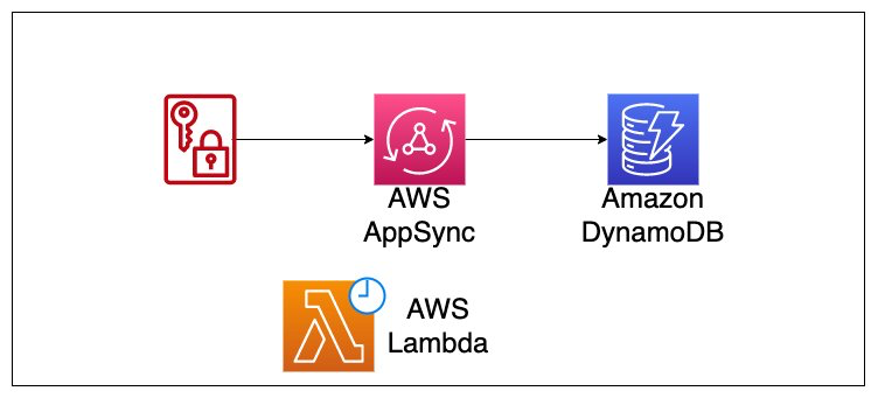(checkout the branches for the IAM permission setup)
This repo walks through the steps needed to get setup an AppSync API that is protected with an API Key.
// valid, but simplified
const api = new GraphqlApi(this, 'User API', {
name: 'User API',
schema: Schema.fromAsset(path.join(__dirname, 'schema.graphql')),
authorizationConfig: {
defaultAuthorization: {
authorizationType: AuthorizationType.API_KEY,
},
},
})- AWS blog post: Secure AWS AppSync with API Keys using the AWS CDK
- Focus Otter blog post: The case for fullstack teams having a dedicated frontend and backend
- Focus Otter YouTube Video: The complete beginners guide to creating fullstack apps using the AWS CDK
- TikTok: Understanding the different parts of AWS Amplify
- Copy/paste snip pic: link to view
The core of the appl
The deployed project is meant to work with a frontend (see link to frontend repo below), thereby creating a fullstack application. In addition to an AppSync API, a DynamoDB table is created to hold User data and a Lambda function is created to populate the table on a schedule.
On the frontend, use of the AWS Amplify JS libraries are used to connect our frontend to our backend by means of the Amplify.configure method (sample data configs are used):
Amplify.configure({
aws_project_region: 'us-east-1',
aws_appsync_graphqlEndpoint:
'https://c4wds3boinhrdemdnqkt5uztny.appsync-api.us-east-1.amazonaws.com/graphql',
aws_appsync_region: 'us-east-1',
aws_appsync_authenticationType: 'API_KEY',
aws_appsync_apiKey: 'da2-ze45yo5nm5dttnnsvkyoxwbbvq',
})With our frontend cofigured to work with out backend, and our Lambda function seeding out database, the frontend will display user data styled with the AWS Amplify UI Components
Note the frontend repo also has a dedicated branch to show the slight change needed for IAM authorization.
npm run buildcompile typescript to jsnpm run watchwatch for changes and compilenpm run testperform the jest unit testscdk deploydeploy this stack to your default AWS account/regioncdk diffcompare deployed stack with current statecdk synthemits the synthesized CloudFormation template

